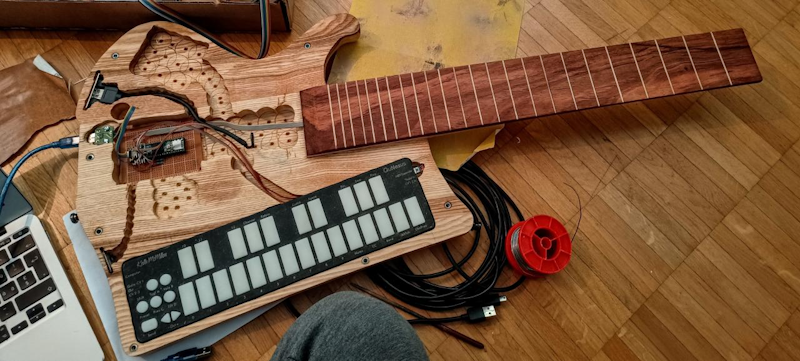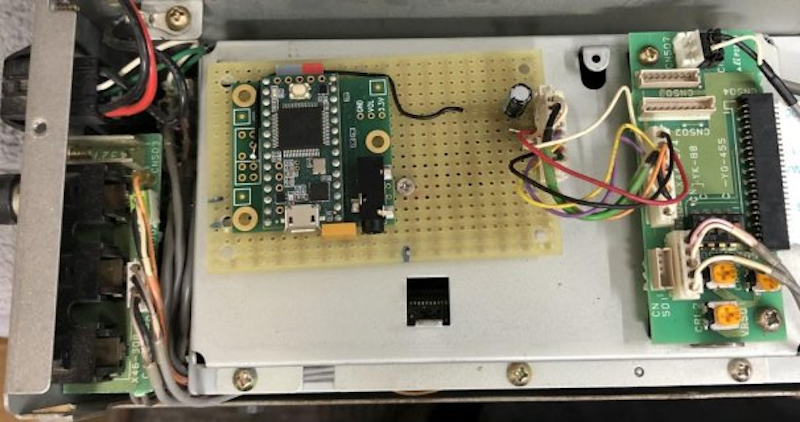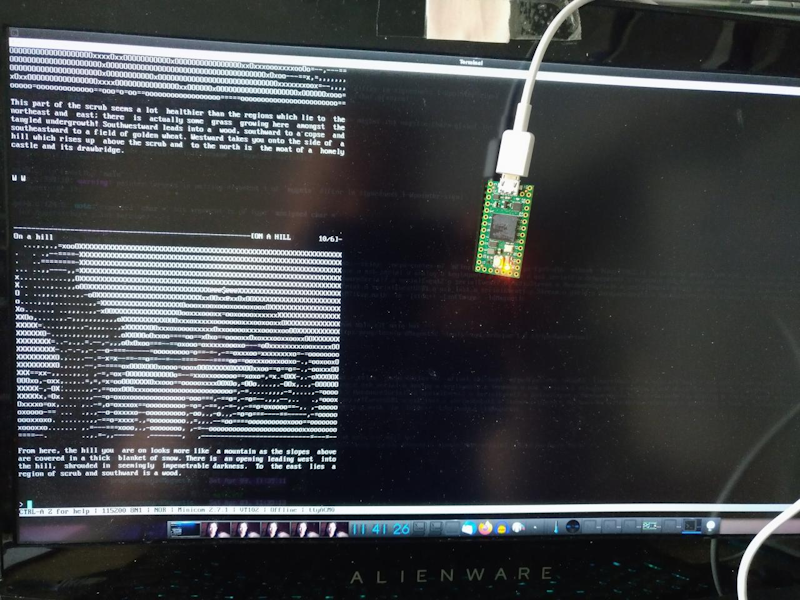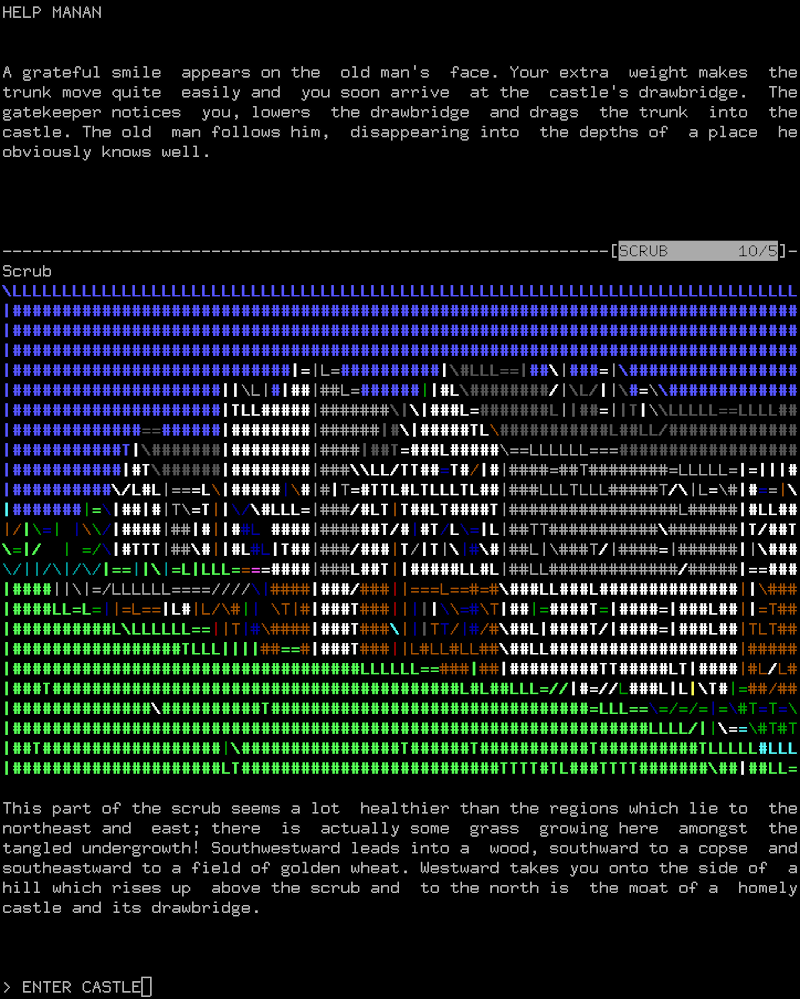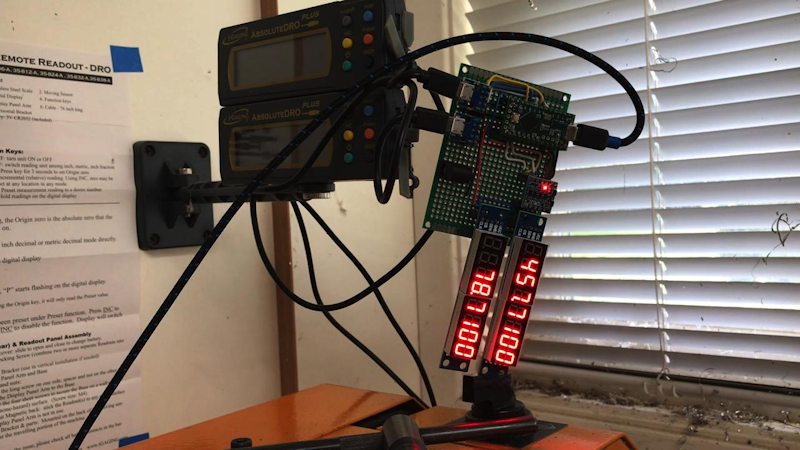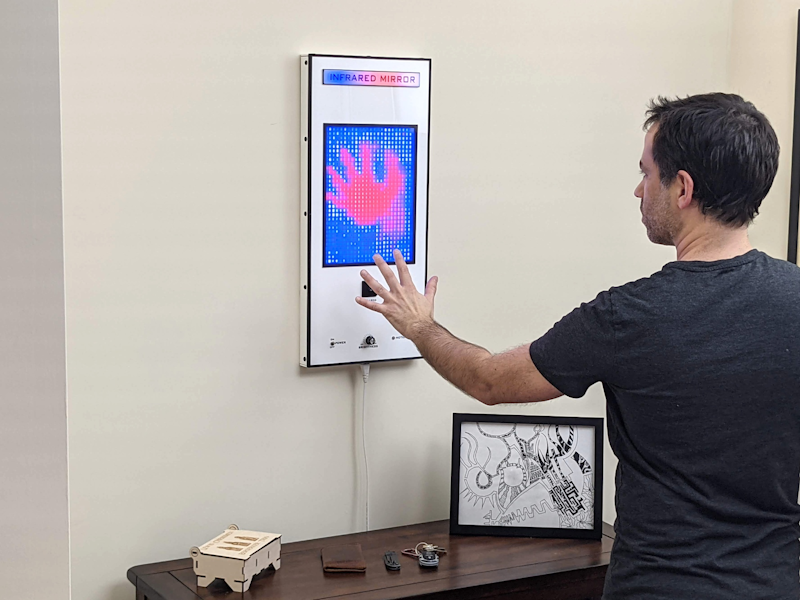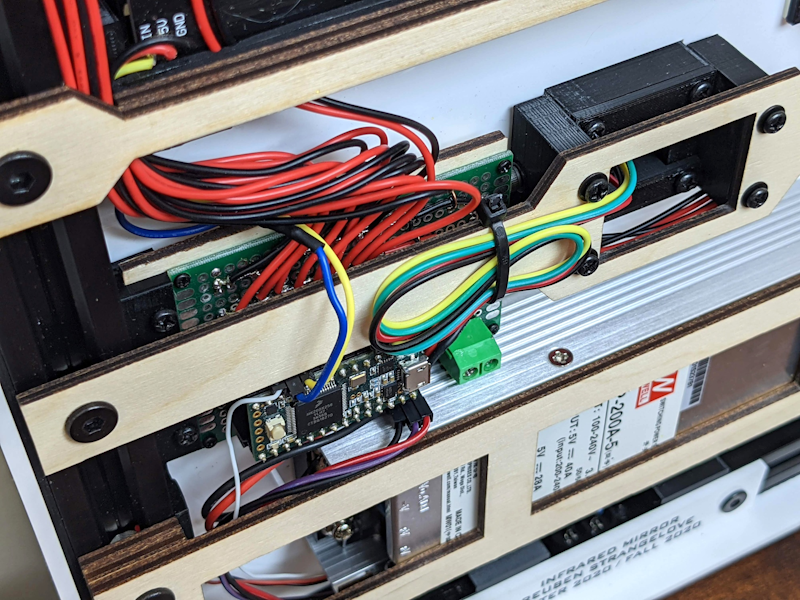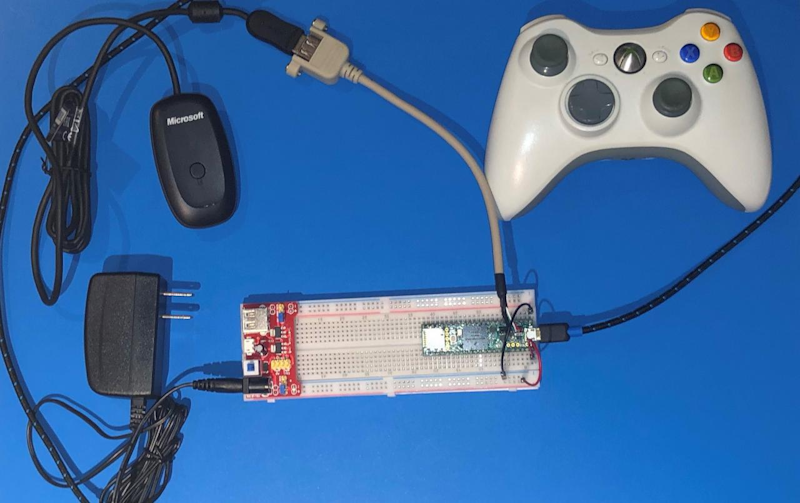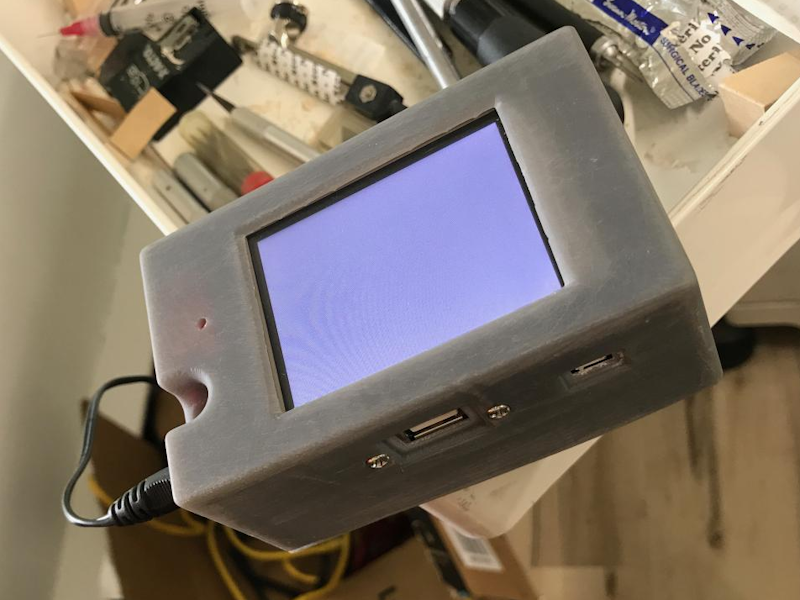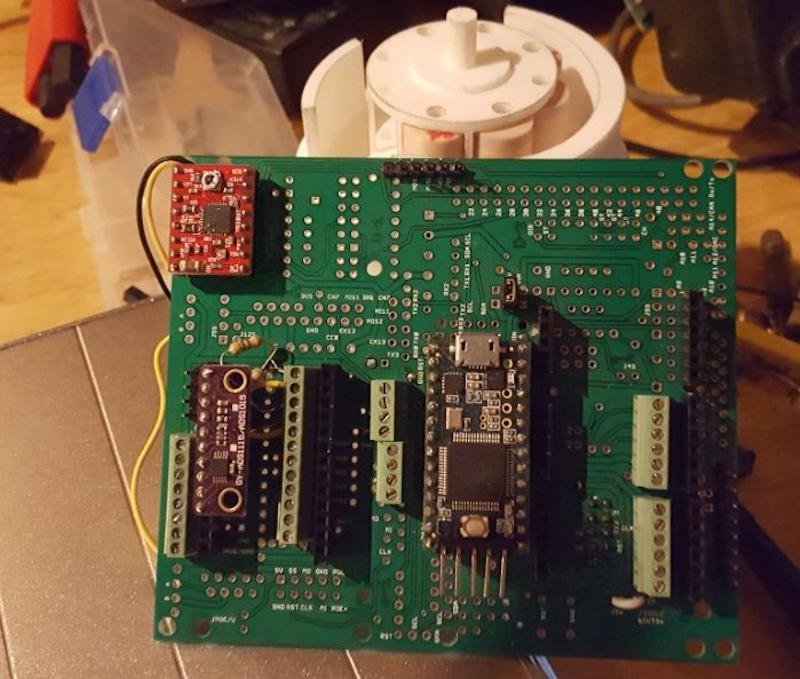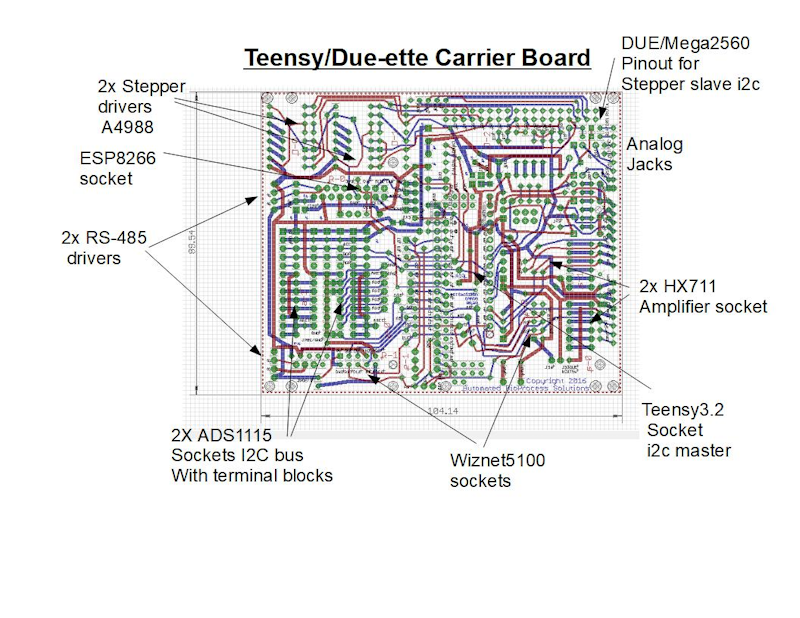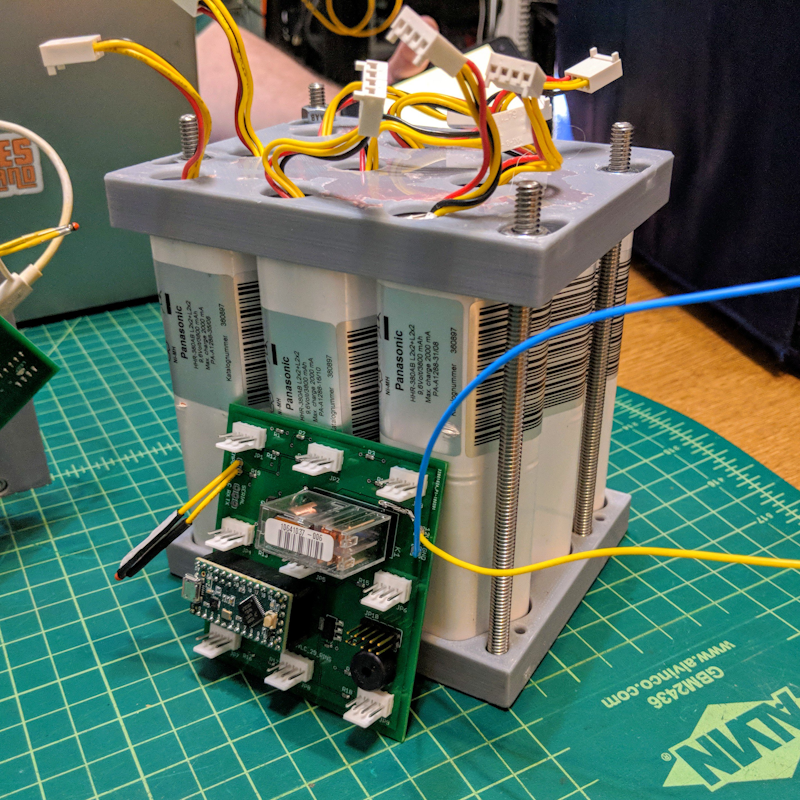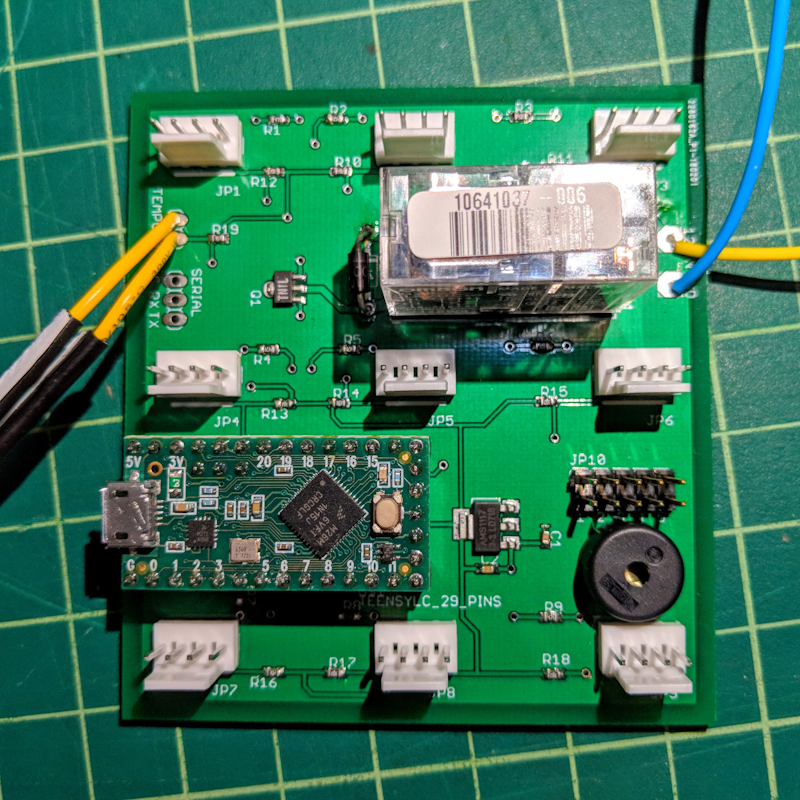We see a lot of Teensy projects that bring the noise, but how many bring the funk? While it’s hard to say for certain without audio proof to back it up, Lokki’s MIDI bass controller certainly looks capable of putting some serious stank on it.
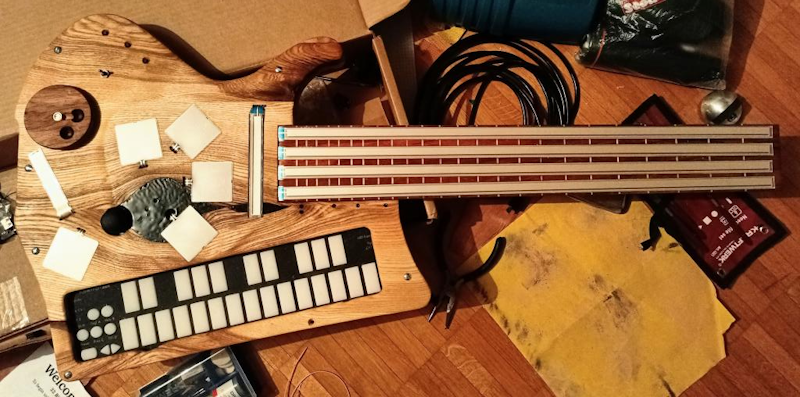
This unique Teensy 3.6-based instrument gives the approximate appearance of a four-string bass guitar, but is in fact a (left-handed!) MIDI controller! In a manner similar to the Otamatone, long, thin, soft membrane potentiometers are used in place of strings for pitch, and a further four force-sensitive resistors enable additional keyboard expression (or…guitar expression as the case may be!). A joystick enables whammy-like pitch bending, and an accelerometer in the neck enables ancillary gestural control.
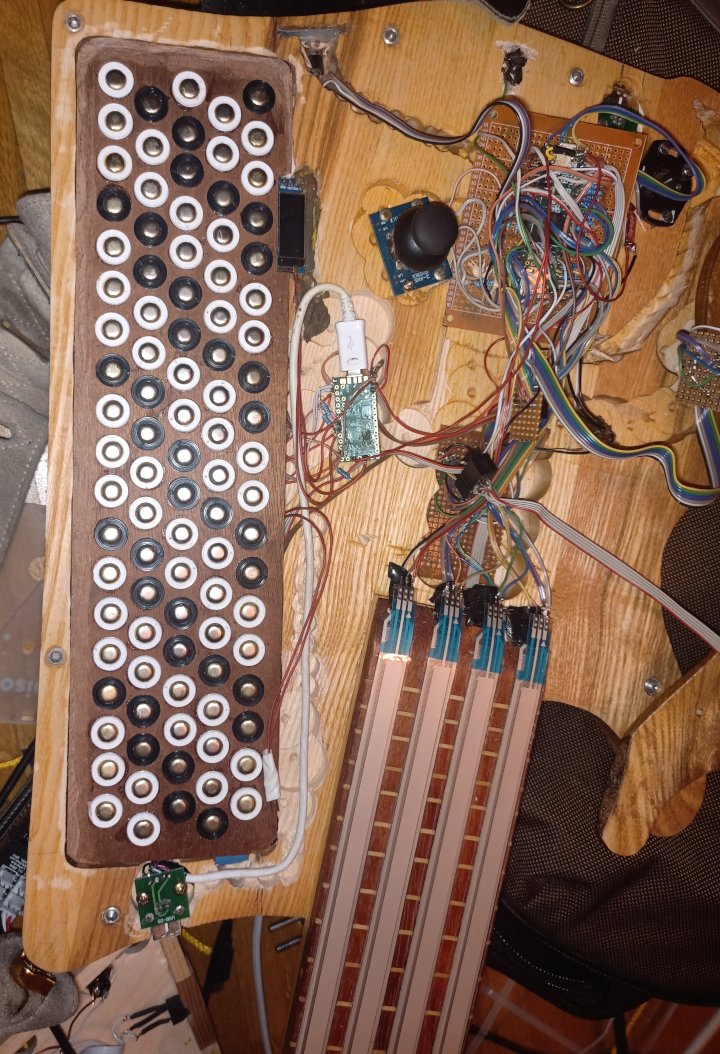
The Teensy’s USB host capabilities allow control of up to seven USB MIDI devices, as well as the embedding of a Keith McMillen K-Board mini keyboard controller for triggering samples. We’d love to hear some of the funk this thing may bring, but for now we can just look at the pictures as we put on our best stank faces and imagine.
